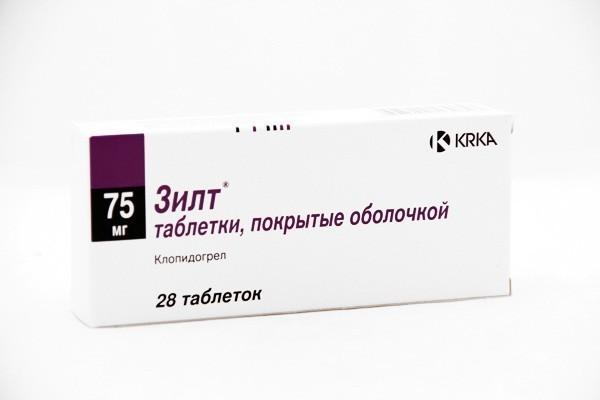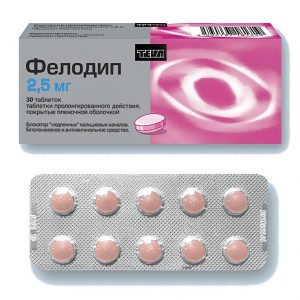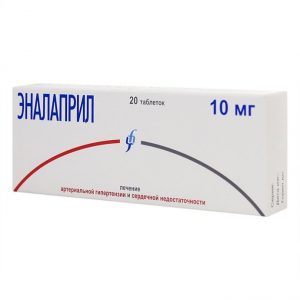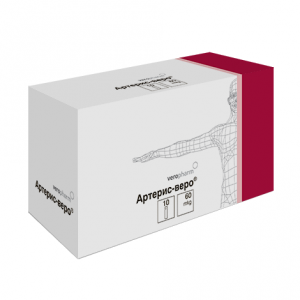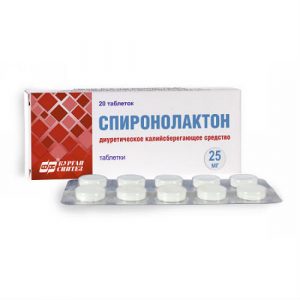Description
Release form
Tablets.
Packing
28 pcs.
Pharmacological action
Zilt – antiplatelet agent. Clopidogrel prevents the binding of adenosine phosphate (ADP) to receptors located on the surface of platelets and the activation of the GP IIb / IIIa complex. This leads to inhibition of ADP-dependent platelet aggregation and inhibition of platelet aggregation under the influence of other stimuli. Thus, the effect of ADP produced in each activated platelet is reduced, and the aggregation of the remaining platelets is stimulated. The effect of clopidogrel lasts throughout the life of the platelet, platelet function is restored 7-10 days after the cancellation of clopidogrel.
Indications
Prevention of ischemic disorders (myocardial infarction, stroke, peripheral arterial thrombosis, sudden vascular death) in patients with atherosclerosis, including after myocardial infarction (up to 35 days), ischemic stroke (from 7 days to 6 months), or against a background of diagnosed peripheral arterial occlusion diseases.
Contraindications
– liver failure
– hemorrhagic syndrome
– acute bleeding (including intracranial hemorrhage)
– diseases predisposing to bleeding (peptic ulcer, duodenal ulcer, ulcer, ulcer lungs hyperfibrinolysis)
– pregnancy
– lactation (breastfeeding)
– age under 18
– hypersensitivity to clopidogrel and / or any of the components of the drug.
The drug is not prescribed in the first few days after myocardial infarction.
Caution is advised to prescribe the drug with an increased risk of bleeding after injuries, operations or as a result of other pathological conditions, as well as in patients with a tendency to bleed (especially gastrointestinal and intraocular bleeding), patients with impaired renal function, and severe liver failure.
Special instructions
In patients with myocardial infarction, treatment with Zilt should not begin in the first few days after a heart attack. Clopidogrel prolongs bleeding time. Zilt should be prescribed with caution to patients with an increased risk of bleeding after injuries, operations or as a result of other pathological conditions, as well as to patients with a tendency to bleeding (especially gastrointestinal and intraocular hemorrhages). Clopidogrel treatment should be discontinued at least 7 days before the planned surgical intervention (including dental procedures).
Composition
Clopidogrel (in the form of hydrosulfate) 75 mg.
Excipients: anhydrous lactose, microcrystalline cellulose, pregelatinized starch, macrogol 6000, hydrogenated castor oil, hypromellose, titanium dioxide (E171), red iron oxide dye (E172), talc, propylene glycol.
Dosage and administration
The recommended dose for adults (including elderly patients) is 75 mg / day, regardless of food intake.
Side effects
Adverse events rarely require discontinuation of clopidogrel treatment.
General: chest pain, trauma, flu-like symptoms, pain, fatigue, asthenia, hernia.
Central and peripheral nervous system: headache, dizziness, paresthesia, leg cramps, hypersthesia, neuralgia.
Autonomic nervous system: syncope, palpitations.
Cardiovascular system: peripheral edema, arterial hypertension, heart failure, generalized edema.
Gastrointestinal tract: abdominal pain, dyspepsia, diarrhea, nausea, constipation, vomiting, taste disturbances, perforation of gastric ulcers, hemorrhagic gastritis, bleeding from an ulcer of the upper gastrointestinal tract.
Liver and biliary tract: increased activity of liver enzymes, hyperbilirubinemia, hepatitis, liver steatosis.
Blood and blood-forming organs: thrombocytopenia, anemia (aplastic or hypochromic), agranulocytosis, leukopenia, neutropenia.
Coagulation disorders and bleeding: purpura, extravasate, epistaxis, gastrointestinal bleeding, hemorrhage in the urinary tract, hemoptysis, intracranial hemorrhage, retroperitoneal hemorrhage, bleeding from postoperative wounds, hemorrhage, hemorrhage, hemorrhage, hemorrhage, hemorrhage, thrombotic thrombocytopenic purpura.
Musculoskeletal system: arthralgia, back pain, arthritis, arthrosis.
Drug Interactions
Concomitant administration of clopidogrel and warfarin is not recommended due to the increased risk of bleeding.
Acetylsalicylic acid does not alter the ADP-induced platelet aggregation caused by clopidogrel. However, the periodic administration of acetylsalicylic acid (maximum 1 g for 24 hours) did not cause an increase in bleeding time. Clopidogrel can potentiate the effect of acetylsalicylic acid on platelet aggregation induced by collagen. Therefore, the simultaneous administration of clopidogrel and acetylsalicylic acid is not recommended, because the risk of bleeding may increase.
Due to the increased risk of bleeding, caution is advised when concomitantly administering clopidogrel and heparin or other thrombolytic drugs.
The simultaneous administration of clopidogrel and NSAIDs increases the risk of erosive and ulcerative lesions of the gastrointestinal tract and ulcerative bleeding. Therefore, caution should be exercised when they are simultaneously prescribed.
No clinical interactions with the simultaneous administration of clopidogrel and atenolol, ACE inhibitors, drugs that lower blood cholesterol, nifedipine, digoxin, phenobarbital, cimetidine, estrogen, theophylline.
Clopidogrel inhibits the activity of the CYP2C9 isoenzyme while it is used with drugs metabolized with the participation of this enzyme (phenytoin, tolbutamine), therefore, an increase in their plasma concentrations is possible.
Antacids do not affect clopidogrel absorption.
Overdose
Symptoms: Clopidogrel overdose can lead to prolonged bleeding time and subsequent bleeding complications.
Treatment: Platelet transfusion is required to correct prolonged bleeding time. There is no antidote.
Storage Conditions
At a temperature not exceeding 25 ° C.
Shelf life
2 years.
Deystvuyushtee substance
Clopidogrel
Pharmacy terms
Prescription
Dosage form
tablets
Appointment
Appointment
Adults appointment physician
KRKA d.d. Novo mesto AO, Slovenia
